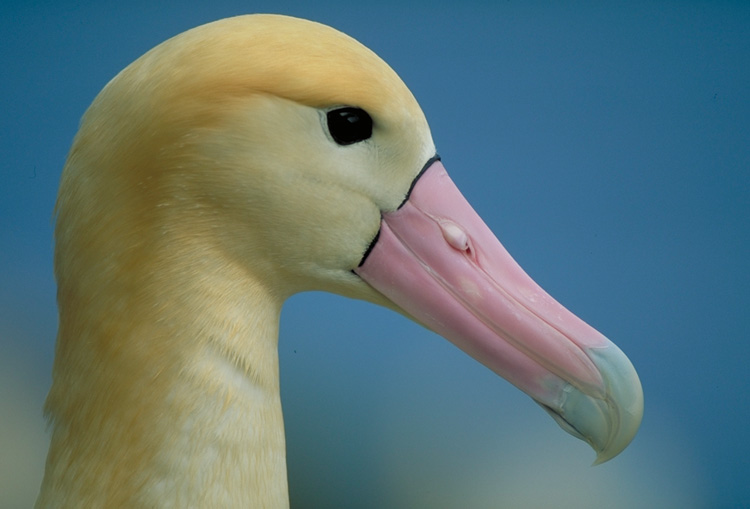Masaki Kuro-o of the Department of Biology, Hirosaki University, Japan and colleagues have published this year on the presence of a genetic bottleneck in Short-tailed Albatrosses Phoebastria albatrus in the journal Conservation Genetics.
The authors conclude that the species has not been deleteriously affected by inbreeding and that it has survived through a severe bottleneck because of an extremely high genetic diversity and because the duration of the bottleneck period was not very long.
The paper's abstract follows:
"In the late part of the nineteenth century and the early part of the last century, the Short-tailed Albatross Phoebastria albatrus was in danger of extinction owing to feather hunting. In the middle of the last century, the total number of this species was inferred to be approximately 50-60 with breeding occurring only on Torishima Island of the Izu Islands. Recently, the number of individuals has increased to more than 2000 and that of their breeding islands to three, namely, Torishima Island, and Minami and Kita-kojima Islands of the Senkaku Islands. Here, we show that the 44 Short-tailed Albatrosses we examined represent 29 haplotypes in the control region of mitochondrial DNA, and have a considerably higher genetic diversity than most avian species, but not very high in albatross species; the h and p were 0.96 and 0.013, respectively. However, the parsimony network clearly showed that many intermediate haplotypes were lost. It was concluded that the majority of the haplotypes in the founder population have been maintained. Judging from these findings and the exponential increase in the number of individuals, the present population of the Short-tailed Albatross seems not to be affected by inbreeding depression through a severe bottleneck. The conservation and expansion of their breeding grounds, and effective protection from bycatch mortality in foraging areas are important for the future survival of this species."

Reference:
Kuro-o, M., Yonekawa, H., Saito, S., Eda, M., Higuchi, H., Koike, H. & Hasegawa, H. 2010. Unexpectedly high genetic diversity of mtDNA control region through severe bottleneck in vulnerable Albatross Phoebastria albatrus. Conservation Genetics 11: 127-137.
John Cooper, ACAP Information Officer, 21 December 2010

 English
English  Français
Français  Español
Español